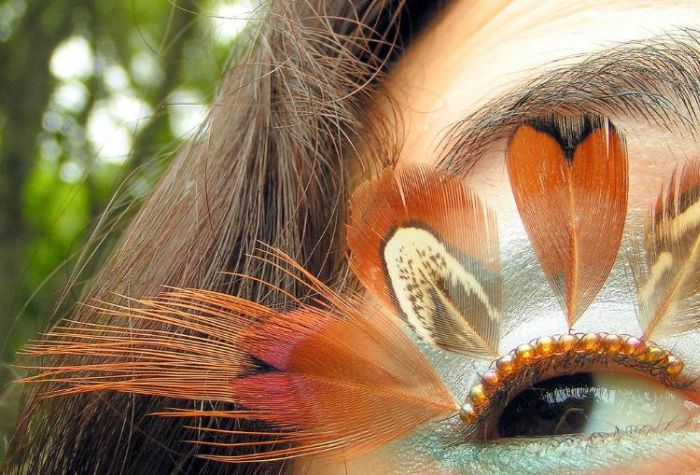|
|
Eye Makeup Detail
|
• Multiple lenses
Some marine organisms bear more than one lens; for instance the copepod Pontella has three. The outer has a parabolic surface, countering the effects of spherical aberration while allowing a sharp image to be formed. Another copepod, Copilia's eyes have two lenses, arranged like those in a telescope. Such arrangements are rare and poorly understood, but represent an interesting alternative construction. An interesting use of multiple lenses is seen in some hunters such as eagles and jumping spiders, which have a refractive cornea (discussed next): these have a negative lens, enlarging the observed image by up to 50% over the receptor cells, thus increasing their optical resolution.
• Refractive cornea
In the eyes of most mammals, birds, reptiles, and most other terrestrial vertebrates (along with spiders and some insect larvae) the vitreous fluid has a higher refractive index than the air, relieving the lens of the function of reducing the focal length. This has freed it up for fine adjustments of focus, allowing a very high resolution to be obtained. As with spherical lenses, the problem of spherical aberration caused by the lens can be countered either by using an inhomogeneous lens material, or by flattening the lens. Flattening the lens has a disadvantage; the quality of vision is diminished away from the main line of focus, meaning that animals requiring all-round vision are detrimented. Such animals often display an inhomogeneous lens instead.
|
|









